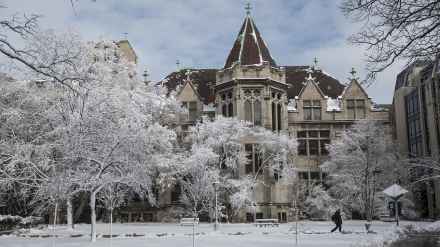Experimental Composer Channels The Doors During UChicago Residency
Constructed by longtime collaborator Winfried Ritsch, Music’s Over was the centerpiece of Ablinger’s nine-day residency at UChicago’s Richard and Mary L. Gray Center for Arts and Inquiry. The residency featured a range of talks, discussions, composition seminars and performances—reflecting the Gray Center’s mission as a forum for experimental collaboration between artists and scholars.
The residency inaugurated Gray Sound, a new program conceived by Gray Center director Seth Brodsky, a leading scholar of 20th- and 21st-century musical modernism. Envisioned as a regular performance and discussion series, Gray Sound represents a chance for prominent artists and the UChicago community to tease the boundaries of sound—when it moves from voice to music, from a recognizable tune to noise.



